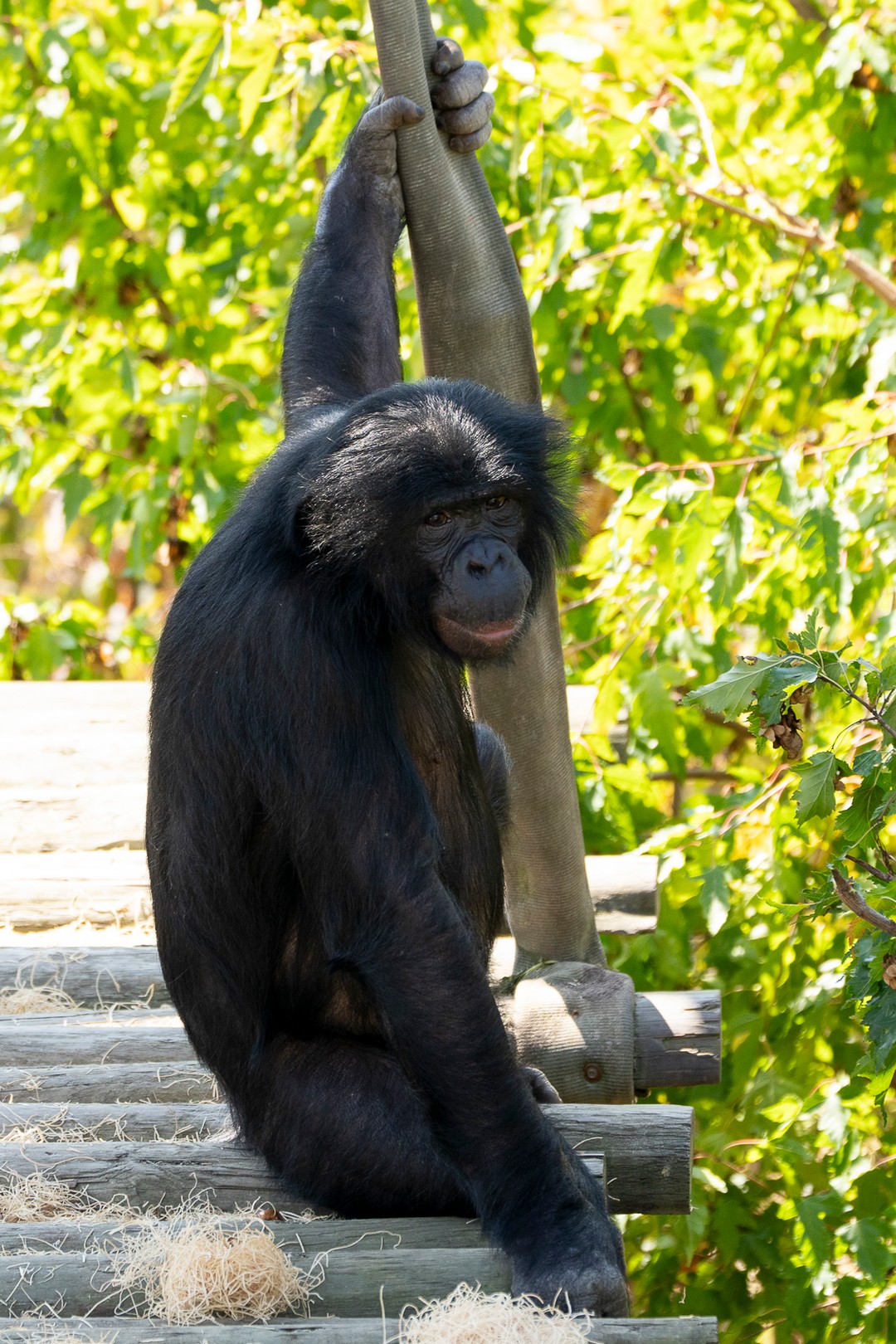- An introduction to It’s APE-ril at the Columbus Zoo, highlighting the bonobo troop and their dynamic indoor habitat.
- The natural habitat and distribution of bonobos, emphasizing their rarity and conservation status.
- The Columbus Zoo’s commitment to bonobo conservation through its longstanding partnership with Lola Ya Bonobo.
- Details of conservation efforts at the Ekolo Ya Bonobo Community Reserve and the significant achievements in bonobo rewilding.
- Encouraging public engagement and education in regards to bonobo conservation and the Columbus Zoo’s initiatives.
The Columbus Zoo welcomes visitors to partake in It’s APE-ril, an engaging event that shines a light on the bonobo troop as they "swing into spring." These great apes are the centerpiece of a celebration focusing on their remarkable abilities and the vital conservation work that supports their survival. Notably agile and spirited, even adult bonobos revel in their new indoor habitat, where their natural acrobatic prowess is on full display. Visitors observe these creatures walking tightropes and spinning energetically, highlighting their playful nature and intricate social behaviors.
Bonobos, scientifically known as Pan paniscus, inhabit only a small geographic area in the dense forests of the Democratic Republic of Congo, making them one of the least understood and researched of the great apes. Despite being ecologically similar to chimpanzees, bonobos exhibit notable differences in social structure and communication. Their societies are often led by females and characterized by cooperative and peaceful interactions, a contrast to the more hierarchical structure observed in chimpanzees. This intricate social system offers valuable insights into primate behavior and evolutionary biology, making their study both fascinating and critical to understanding human evolution.
The Columbus Zoo plays an indispensable role in raising awareness about bonobos and their endangered status. With estimates suggesting fewer than 50,000 individuals remain in their native habitat, threats such as habitat destruction, hunting, and political instability pose significant risks to their survival. As a leader in wildlife education and conservation, the Columbus Zoo is dedicated to protecting these remarkable apes and their ecosystems. This commitment is exemplified by their partnership with @lolayabonobo, a conservation organization that has been supported by the Columbus Zoo for 27 years.
Lola Ya Bonobo operates a sanctuary and is involved in crucial community-based conservation efforts through the Ekolo Ya Bonobo Community Reserve. This 117,000-acre sanctuary is a crucial habitat that shelters not only bonobos but also a myriad of other species. Conservation strategies at the reserve focus on community involvement, education, and sustainable practices to foster a symbiotic relationship between human communities and wildlife.
The community reserve has notably succeeded in releasing 35 bonobos back into the wild, a significant achievement that requires careful planning and ongoing monitoring. This rewilding effort involves meticulous preparation, from health assessments and behavioral observation to ensuring that bonobos can adapt to their natural environment. The success of these releases underscores the importance of a comprehensive conservation strategy that integrates habitat preservation, scientific research, and education.
The Columbus Zoo’s dedication to these projects is an invitation for the public to engage with and support conservation strategies. Educating zoo visitors about the importance of bonobo conservation is a crucial component of these efforts. Interactive exhibits, engaging talks, and educational materials are designed to inculcate a sense of responsibility and advocacy for wildlife conservation.
A visit to the zoo during It’s APE-ril offers an immersive experience to learn about bonobos, their habitats, and the critical efforts needed to preserve them. As guests witness the playful and social nature of bonobos, they are encouraged to consider their role in conservation and how they can contribute to preserving biodiversity.
Finally, visiting the Conservation page on the Columbus Zoo’s website provides an opportunity for individuals to extend their learning and involvement. By understanding the challenges and triumphs of bonobo conservation, the public can support efforts that ensure the future of bonobos and other endangered species, fostering a world where harmony between humans and wildlife is achieved.
*****
Source Description
It’s APE-ril – come visit our bonobo troop as they “swing into spring!”
Bonobos are extremely agile and playful, even as adults, and our new indoor habitat provides them with ample opportunities to show off their acrobatic skills. From walking a tightrope to spinning fast, these apes know how to celebrate the season.
Found in just one small area in the Democratic Republic of Congo, bonobos are the least known of the great apes and the Columbus Zoo is committed to raising awareness of this unique endangered species.
As part of this mission, the Columbus Zoo has been a proud supporter of @lolayabonobo for the last 27 years. This conservation organization encompasses both Lola Ya Bonobo sanctuary and Ekolo Ya Bonobo Community Reserve, which focuses on community-based conservation efforts. This 117,000-acre reserve in Équateur Province, DRC, is a protected rainforest where bonobos and many other animals and plants flourish. To date, this amazing organization has successfully released 35 bonobos back to the wild.
To learn more about our commitment to bonobo conservation and this incredible organization, visit the Conservation page on our website.


